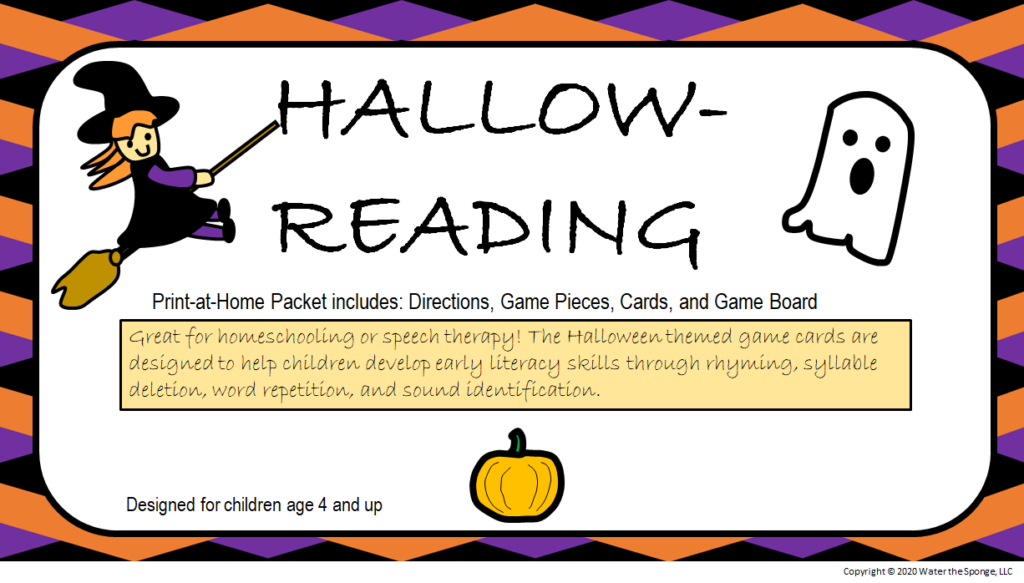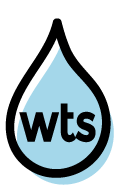I know you’ve been waiting on pins and needles – I’m back with more information regarding syllables and teaching kiddos to read!
In my last post, I introduced the concept of syllable deletion and discussed the role it plays in literacy development. In addition, I talked about phonological awareness and how it is linked to early literacy.
In today’s post, I want to delve into syllable identification and word repetition and the role that these skills play in literacy development.
Word repetition is when a person repeats a word exactly as it is presented to him or her. This skill is applied to both real words as well as nonsense, or nonreal, words. So if you ask your child to say “avocado” or “thimnik” then he would repeat it precisely how you say it.
Syllable identification is when a person identifies the number of syllables that are in a word. For instance, the word “apple” has two syllables (ap-ple), whereas the word “banana” has three syllables (ba-na-na).
Why are word repetition and syllable identification important when it comes to literacy? I’m glad you asked! This is a part of the reason we are here today, but if you’d rather skip to the home therapy ideas, then feel free to wander on down to “Let’s Water the Sponge!“

Word Repetition: Why it’s Important
Before a child can delete or manipulate syllables, he must first be able to repeat the word correctly.
When you ask children to repeat words you are exercising their short-term memory, or their ability to temporarily store information.
The ability to create long-term memories is dependent upon how information is stored in short-term memories. In fact, a third kind of memory, working memory, is needed to manipulate the information that is stored in short-term memory. This article discusses the potential definitions of each type of memory.
If a child isn’t able to repeat a word correctly then it isn’t stored correctly. For example, if a child is asked taught the word “discombobulated” and she repeats it as, “disbobulated”, then that is how she will store the word in her memory. Then later on when she goes to use it in conversation, she will say the word incorrectly as, “disbobulated.”
Furthermore, if a child stores the word incorrectly in her memory, then she will retrieve it incorrectly not only in conversation, but also when reading. I’m going to say that again, because it is very important.
If a child repeats and stores a word incorrectly in her memory, then she will also retrieve in incorrectly when reading.
So, circling back to the original example, now when the child sees the word “discombobulated” while reading, she will most likely read it as “disbobulated.”
The fact that children typically read words as they have stored them in their mind applies across the board to multisyllabic words, semantics, irregular past tense (e.g., “ran”), irregular plurals (e.g., “mice”), and pronunciation. So, if for example, a child doesn’t use irregular past tense correctly (e.g., “runned” for “ran”), then she will also read irregular past tense words incorrectly, in this case, “runned” instead of “ran”.
Finally, the ability to repeat words correctly helps build auditory memory. If someone is struggling with remembering information through auditory means, then having them repeat multisyllabic words that are real and not real would help them exercise their auditory memory.

Syllable Identification: Why it’s Important
Syllable identification helps children learn where to divide and break words apart naturally. In other words, the ability to identify syllables helps children break larger words into their components. In turn, this aids children in their ability to decode words easily and fluently.
Note that while the concept of syllable identification can be introduced from an early age, it can’t be mastered until a child can accurately repeat the word. If he says “copter” for “helicopter” and you ask him to count syllables, he might say “2” instead of “4”. This is another reason that word repetition is important, as it lays the foundation for future early literacy skills.
Another reason to introduce syllables is not only for the purpose of reading, but also for spelling. Children who are able to break words down into smaller components will have an easier time tackling spelling because it won’t seem so overwhelming.
When Should I Introduce Syllables?
Once your child seems to have a solid linguistic foundation and is able to grasp some abstract concepts that are not about the here and now, then you can introduce syllables to your child. For some, it might be around age 3, and for others it might be better to introduce it around age 4.
While I have used the “tapping-it-out” strategy with both of my children since they were little, I recently gave syllables a name to my 3-year-old. Due to the fact that we have been practicing since he was little, he already has a sense of where words break apart and how many syllables are in a word. He seems to be excited about playing around with words and learning about these kinds of topics, so I talk to him about it. Just gauge your child and his or her level of interest – you are the expert on your little one!
Here is some information on different skills regarding phonological and phonemic awareness and when you can expect them to take place.
Keep reading below for some tips to develop word repetition and syllable identification below!

Let’s Water the Sponge!

First and foremost, I encourage you to purchase the game above to improve your little one’s early literacy skills! The target age range is 4 years and older and it ties my early literacy posts together nicely.
Word Repetition
When it comes to repeating words, you might think, “What can I possibly do to improve my child’s ability to repeat words correctly?” I hear you, that is a great question.
One way to approach word repetition is to see the maximum number of syllables your child can repeat before he breaks down. Remember, the goal is always to see what your child can do and to go from there. Meet your child where he is at and build upon existing skills.
So, if your child can repeat single syllable words but struggles with bisyllabic words, then work on bisyllabic words. Once he masters bisyllabic words, target words containing three syllables. Try to work your way up to words that contain three and four syllables, as most words contain between one and four syllables.
If you’re wondering what to do to teach syllable identification, feel free to re-read my “Let’s Water the Sponge!” tips from my last post and my post about word boundaries! To reiterate:
1.) USE BLOCKS to add a visual and tactile cue when it comes to working on syllables (https://lindamoodbell.com/). Blocks are fun, colorful, and interesting! They give children a concrete manner to interpret an abstract concept. You can use blocks to teach a child how many syllables are in a word.
2.) TAP-IT-OUT or CLAP-IT-OUT. This strategy is one I have mentioned multiple times. It works amazingly well. Just tap along your arm or clap out the syllables in the word as you say them. So if you’re saying “banana”, tell your child, “ba” (tap/clap) “na” (tap/clap) “na” (tap/clap).
CHECK OUT THIS FREE AUTUMN WORD LIST BELOW! You can have your child repeat the words on the list and/or identify the number of syllables in the word.
| 2 SYLLABLE WORDS | 3 SYLLABLE WORDS |
|---|---|
| Acorn | Celebrate |
| Apple | Cranberry |
| Autumn | Family |
| Branches | Gathering |
| Breezy | Generous |
| Chilly | Hibernate |
| Cobweb | October |
| Outside | November |
| Pumpkin | Seasonal |
| Squirrel | Thanksgiving |
If you have any questions or comments, feel free to do so below!


